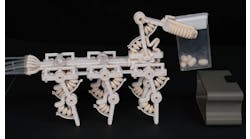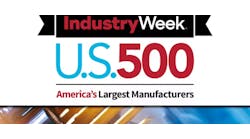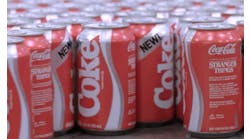Last week, I spent two and a half days in Cincinnati, Ohio as the guest of Source Cincinnati, an independent, multi-year national social and media relations initiative that works to enhance perceptions of Cincinnati as a world-class Midwestern region. I met with Julie Calvert, executive director, during my visit, but my personal guide and host was Paul Fox, vice president of Strategic Initiatives at Procter & Gamble and "Executive on Loan" to Source Cincinnati for a year.
From Fox, I learned that Cincinnati is the third largest city in Ohio and had such interesting nicknames as "Porkopolis" in the past because it was the largest pork packing center in the world and the “Queen City of the West,” for its ideal location on the Ohio River and its rich culture and heritage of a predominantly German population which settled Cincinnati in the late 1700s.
After arriving late Tuesday afternoon, Fox and I had dinner with David Linger of TechSolve, and Scott Broughton, center director for Advantage Kentucky Alliance at the WKU Center for R&D at Western Kentucky University in Bowling Green, Ky. TechSolve is a 30-year old consulting firm that is a State of Ohio Manufacturing Extension Partner (MEP) affiliate, and Advantage Kentucky Alliance (AKA) is the MEP for Kentucky. Linger just took over the reins as president and CEO on September 1, 2016 after Gary Conley retired from 20 years of service.
Linger, said "There are about 2,500 manufacturers in the Ohio region of metropolitan Cincinnati, and Cincinnati used to be known as the "Machine Tool Capital of the U. S.", but very few machine tool companies exist today, including its most well-known machine tool company, Cincinnati Milacron," after its machine tool line was sold to Unova. TechSolve provides manufacturing and health care consulting. It has a focus and strength in process improvement, machining and innovation -- applying these skills to help businesses find long-term solutions and promote problem-solving cultures.
Broughton said, "AKA is a not-for-profit partnership that provides assistance and training to help manufacturers of all sizes grow, improve their manufacturing and business strategies and processes, adopt advanced technologies, increase productivity, reduce costs, and improve competitiveness. Manufacturing in Eastern Kentucky was mainly related to the coal mining industry, and two-thirds of the companies have gone out of business. We have focused on helping the remaining manufacturers to understand their core competencies to market to new industries, such as aviation and automotive. Our services include: business growth services, continuous improvement services and workforce solution services."
On Wednesday morning, we had breakfast with Laura Brunner, president/CEO, and Gail Paul, director of Communication Strategy of the Port of Greater Cincinnati Development Authority. She told me that the Port Authority was established by the City of Cincinnati and Hamilton County in 2001 and is empowered to take a leadership position in regional economic development. It is a quasi-public agency that operates collaboratively with dozens of economic development, community and corporate partners. The Ports of Cincinnati and Northern Kentucky, which is a 226.5-mile port district located in 15 counties, is the busiest inland port district in the nation, by annual freight tonnage (about 50 million tons).
Brunner presented me with a report titled "Manufacturing in the Greater Cincinnati Region,” which explained as background, "The Port Authority leverages its infrastructure strengths and development-related expertise to design and execute complex projects to improve property value, catalyze private investment and promote job creation.”
I was astounded when she told me, "The Cincinnati region has lost 67% of its manufacturing jobs." The report states, "Manufacturing was a primary component of Cincinnati's economy until its peak in 1969 when 43% of the workforce in Hamilton County was employed in manufacturing jobs. Today, lower-wage service-providing jobs far outnumber manufacturing jobs by about 7:1…From 1969-2015, the number of people employed in manufacturing decreased from 146,000 to 48,000."
She said that the Port Authority Board of Directors has established a vision to transform Cincinnati to prosperity by 2022 through "repositioning undervalued properties and re-building neighborhoods." The report she gave me states that the strategies for success are:
- "Industrial Revitalization – redevelopment of 500 acres of underutilized industrial land along key transportation corridors
- Neighborhood Revitalization – transform 10 communities for lasting impact, including residential properties and commercial business districts
- Public Finance Innovation – cultivate a nationally-recognized public finance program that supports economic and community development efforts
The projected Return on Investment for these strategies is:
In June 2015, the PGCDA Board approved establishment of the industrial and neighborhood strategy, development of internal resources, communication strategy, and the financing and fundraising plan to support the strategies."
The report states, "The proposed redevelopment of approximately 2,000 acres of industrial land through Hamilton County for manufacturing uses will have a considerable impact on the Greater Cincinnati Region."
The first sites for the redevelopment pilot program have been selected, and the first funds have been obtained for acquisition of land parcels, demolition/remediation of existing buildings, and site preparation. The first site is assembled and is scheduled to open in 2017.
Manufacturing Attractiveness
In the meeting with Brunner and Paul, I was also provided a "Manufacturing Attractiveness Study" by Deloitte Consulting LLP presented on October 3, 2016 to the Greater Cincinnati Port Development Authority, TechSolve, and Cushman and Wakefield.
The study states, "The current lack of easily developable real estate (cleared, access to utilities, free from environmental concerns, etc.) in the Cincinnati area likely puts the city at a significant disadvantage for attracting manufacturing investments.
The Port Authority’s operations focus on transportation, community revitalization, public finance and real estate development makes it especially well-equipped to evaluate and address opportunities to redevelop and reposition sites formerly occupied by industrial operations."
The Port Authority seeks "to achieve the following objectives:
- Analyze the last 5 years of manufacturing deployments in the Ohio Region (Ohio and surrounding states)
- Understand trends in urban manufacturing through case studies
- Identify demand-side location factors that drive location decisions in the advanced manufacturing, food and flavoring, and Bio-Health (Life Sciences) industries
- Understand the strengths/ weaknesses of Cincinnati as business location"
In analyzing the manufacturing investments for the Ohio region from 2011-2016, the study revealed:
"Indiana, Ohio and Kentucky saw the most number of project announcements along with largest amounts of capital investment over the past five years."
"The majority of the manufacturing investments in Ohio over the past 5 years are spread throughout rural areas within commutable distances of large metropolitan areas (Cincinnati, Dayton, Columbus, Akron and Cleveland.) Based on FDI data, 14 manufacturing projects were announced in Cincinnati within the past 5 years."
The Deloitte study stated, "Advanced manufacturers are highly interested in labor quality and availability as well as minimizing risk related to site development and neighboring use concerns." The two highest factors are: "Labor Quality and Availability (engineers, technicians and operators) and Real Estate (Site readiness, Capacity and availability of utilities, and Neighboring use/pollution). Labor quality, labor availability and supply chain tend to be the key drivers for food industry in making location decisions.
The study showed that "A 1-hr drive time from downtown Cincinnati allows access to a significant labor force, with over 2.5 million in population." The manufacturing industry represents 14.34% of the Cincinnati Metro economy. Persons with associate degrees (20.12%), bachelor degrees (11.97%), and graduate degrees (8.42%) represent 50.51% of the population, and another 45.71% of workers have a high school diploma (26.08%) or some college (19.63%).
Other advantages are: "When compared to the states surrounding Ohio, Ohio has a relatively low average industrial electricity price;" and "Cincinnati is located right in the heart of the most utilized truck routes in the country and has a relatively low percentage of roads requiring significant maintenance when compared to nearby states…"
The summary findings of the report were:
- "Cincinnati has an advantage in the presence of industrial engineers, machinist and tool/ die makers, as well as a large supply of lower skilled production workers, giving the area a talent proposition to attract manufacturing deployments
- However, a key driver of the evaluation process for manufacturing deployments is developable sites… Cincinnati currently lacks suitable real estate options to entice most manufacturing operations
- Given Cincinnati's availability in key manufacturing skill sets and low/average cost in several talent segments, an investment program to prepare site options would enhance its ability to attract manufacturing investment."
Our next meeting was with Kimm Coyner, vice president, Business Development & Project Management of REDI Cincinnati, which was spun out of the Cincinnati Chamber in 2014 with the support of Jobs Ohio. REDI Cincinnati covers 15 counties ─ five in Southwest Ohio, seven in northern Kentucky, and three in Southeast Indiana, through which the Ohio River runs in the center.
Coyner said, "REDI is solely focused on new capital investment and attracting and expanding manufacturing to create good paying jobs. We have 165 public and private members. Our team identifies opportunities to attract businesses to the region by developing relationships with companies and new markets - domestically and across the globe. We provide connections to the resources that take startups to the next level and grow existing businesses. We connect companies to the region's assets, advantages and business leaders to secure Greater Cincinnati's place as one of the world's leading business centers."
She told us that railroads were the key to industrial development of the region in the 19th century to provide transportation beyond the river. She said, "While Cincinnati arguably stayed too long in the manufacture of carriages and missed out on being a primary automotive manufacturing center like Detroit, we remain a major tier 1 supplier to that industry with hundreds of manufacturers and a significant talent base. We have five key industry clusters: Advanced Manufacturing, Information Technology, Food and Flavorings, BioHealth, and Shared Services. Advanced Manufacturing is made up of automotive, aerospace, chemicals and plastics and additive manufacturing/3D printing. Our region is the #1 supply state to Boeing and Airbus. We have nine Fortune 500 companies headquartered in Cincinnati, and four of the nine are manufacturers: AK Steel Holding, Ashland, Kroger and Procter & Gamble."
I was subsequently emailed a list of the top 10 employers, nine of which are manufacturers:
- Kroger 21,646 employees
- GE Aviation - 7,800 employees
- AK Steel Holding Corp. - 2,400 employees
- United Dairy Farmers - 2,029 employees
- Ford Motor Co. - 1,650 employees
- Mubea NA - 1,360 employees
- Bosch Automotive Steering - 1,300 employees
- Intelligrated Inc. - 1,100 employees
- Hillenbrand Inc. - 1,080 employees
- Milacron LLC - 1,020 employees
She added, "We participated with JobsOhio in a booth at the IMTS show in Chicago and focused on promoting Cincinnati as a site destination to companies from Germany." She noted that Cincinnati has the second largest Oktoberfest outside of Munich, Germany. I told her that we have a strong German-American club in San Diego that puts on a good Oktoberfest featuring a band they bring from Germany.
It is obvious to me that Cincinnati leaders recognize the important role that manufacturing plays in a local and state economy. I had mentioned to everyone I met that manufacturing is the foundation of the middle class, and if we lose manufacturing, we will lose the middle class. Cincinnati learned this lesson the hard way, but I am confident that their new vision to re-industrialize Cincinnati will create good paying jobs for residents and restore prosperity to the Cincinnati region.
I was honored to be invited to give a presentation on "How to solve the skills shortage and attract the next generation of manufacturing workers" that was based on several articles I have written in the past four years (all are available at www.savingusmanufacturing.com under Workforce Development category). If Cincinnati's leaders achieve their vision, more skilled workers will be needed. Specific recommendations I made were: (1) start to engage youth in middle school through summer camps, and robot contests (2) provide career technical pathways in high schools and community colleges, plan a Maker Faire, promote establishment of a Maker Place, and become more involved in future Manufacturing Days (www.MFGDAY.com).
These meetings provided so much information that I will devote my next article to my visits to local manufacturers: GE Ceramic Matrix Composite Laboratory at the GE Aviation plant in Cincinnati, Balluff North America in Florence, KY, and TSS Technologies in West Chester, OH, as well as the Center for Intelligent Maintenance Systems at the University of Cincinnati.





